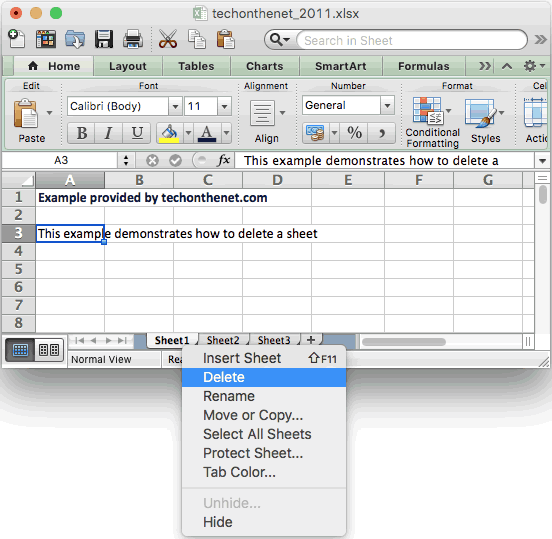

- #HOW TO COMPLETELY UNINSTALL MS OFFICE 2011 FOR MAC HOW TO#
- #HOW TO COMPLETELY UNINSTALL MS OFFICE 2011 FOR MAC FOR MAC#
- #HOW TO COMPLETELY UNINSTALL MS OFFICE 2011 FOR MAC MAC OS X#
- #HOW TO COMPLETELY UNINSTALL MS OFFICE 2011 FOR MAC INSTALL#
- #HOW TO COMPLETELY UNINSTALL MS OFFICE 2011 FOR MAC SOFTWARE#
"How to Uninstall & Remove Mac OS X Programs and Applications," The Mac Observer. "Uninstalling Applications in Mac OS X,". "Tutorial: Now you see 'em, now you don't: Invisible files in Mac OS X,", May 19, 2004. But clearing away computer clutter and making space on your hard disk can be just as satisfying.
#HOW TO COMPLETELY UNINSTALL MS OFFICE 2011 FOR MAC SOFTWARE#
Removing software from your Mac is a lot less of a hassle than cleaning your office or garage. If, after you remove a program, the icon is still in your dock, you can get rid of it by simply dragging it off the dock and letting it go.Removing the files of one component may affect the others, so it's good to be cautious with these.
#HOW TO COMPLETELY UNINSTALL MS OFFICE 2011 FOR MAC HOW TO#
Suites of software from a developer, such as the Office suite from Microsoft, often share files. Mac Tutorial - How To Completely Uninstall Applications On A Mac - Mac Tutorial - How To Completely Uninstall Applications On A Mac HD. If you ever reinstall the same software, you won't have to set the preferences. It often makes sense to leave preference files alone. Some developers charge for their software, but you may not need the bells and whistles. If you opt for a third-party uninstall utility, look at the features. If you're uninstalling at work and don't have administrator privileges, you'll have to consult with your tech people. Log on as your computer's administrator whenever you uninstall. Before you begin any uninstalling process, check to make sure your Trash is empty or contains nothing you might want to save. Make a note if it has its own uninstall utility or instructions. #HOW TO COMPLETELY UNINSTALL MS OFFICE 2011 FOR MAC INSTALL#
When you install a program, check to see how to uninstall it. Ĭheck out the next page for tips to make your uninstallation go even more smoothly. Drag the files you find to the trash to get rid of them. You can search for the relevant names using Spotlight, which is included with the Mac OS. They will usually be labeled with the name of the program, like Office or Acrobat, or the developer, such as Microsoft or Adobe. These files are likely to reside in Library folders in your hard drive or Home folder. Background files or support files can be larger, especially for multimedia programs like GarageBand. Preference files are usually small and you might want to ignore them if you're just trying to free up disk space. You should be aware that removing an unbundled program by moving it into the Trash can leave behind orphan files on your computer. Running an uninstall utility can make removing a program much easier. If you downloaded a disk image to install the software, sometimes you'll find an uninstaller there. If your program has an uninstall utility associated with it, it may have been installed with the program or included on the disk that came with it. The first step in removing them is to check the program's documentation to see if there is an uninstall utility. When installed, these programs create files in several locations, often in the System Folder. įor some other programs, removal is more complicated. You should see an option that says, "show package contents." Uninstalling applications downloaded from the Mac App Store is even easier - just delete the application from the Applications Folder and its accompanying folder in User\Library\Containers. In Mac talk, apps like this are "bundled." To see the files in an application's bundle, click on its icon while holding down the Control key. 
When files for the application you want to delete are all stored in one location, dragging the icon to the Trash will take care of most of the work.
Drag the icon of the program you want to uninstall to the Trash. Open the Applications folder, which you'll find by opening a new window in the Finder (icon with a blue face), or clicking on the hard disk icon. Open Finder and from the options menu, click Go > Go to folder. Now highlight Office applications with following names:ĭo a right click on these apps one by one, and select Move to trash.Ģ. From the dock, open Finder and go to Applications folder. How To Completely Uninstall Microsoft Office 2016 For Macġ. #HOW TO COMPLETELY UNINSTALL MS OFFICE 2011 FOR MAC FOR MAC#
Hence, you should install Office 2016 for Mac completely, which is described below.īefore proceeding with the steps mentioned below, make sure that applications namely Word, PowerPoint, Excel, OneNote and Outlook are closed and not running even in background. So in case if you later want to reinstall Office 2016 for Mac, then you may face issues because of traces leaved by previous installation. But if you uninstall this way, though the apps get uninstalled, but their data remains intact on the system. Actually, the uninstall of Office components is very simple in Mac and you have to just go Applications folder and move Office apps to trash folder. Today, we’re going to discuss how to uninstall Office 2016 for Mac without leaving traces. What’s New In Microsoft Office 2016 For Mac






 0 kommentar(er)
0 kommentar(er)
